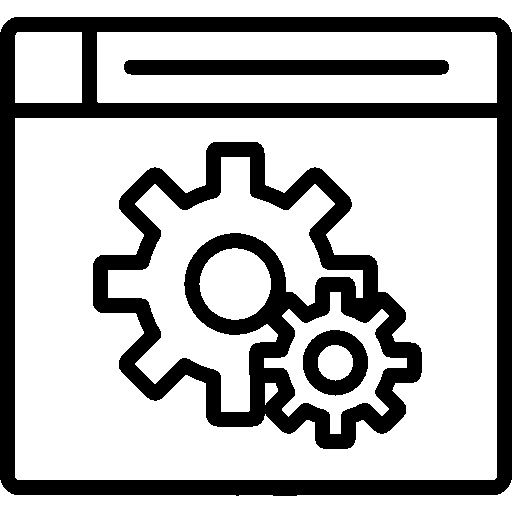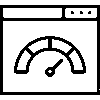- Products
- Platform
- Solutions
- Customers
- Support
- Pricing
 Website & Mobile & E-commerce
Website & Mobile & E-commerce
 CRM
CRM
 Operation & ERP
Operation & ERP
 Productivity
Productivity
 Support
Support
 Community
Community
 Learn
Learn
Application Support Point

Manage your company's digital assets. Use it for personal work or share with other employees for collaboration.
- Version History
- Application Features
- User Manual
- FAQ
- Community
Definition
The Docs app is designed to allow users to create, edit, store, and share digital documents. This application streamlines the management of text documents, spreadsheets, presentations, and other digital content.
Aim
The goal of the Docs app is to make document management more efficient, facilitate collaboration and access, and ensure secure document storage. Users can easily access their documents from any device and share them with others.
Key Benefits
- Multiple users can work on the same document simultaneously.
- Document access permissions can be managed (read, write, share permissions).
- Provides access to previous versions of documents.
- Documents can be organized with the help of folders and tags.
- It offers quick access with document search and filtering features.
- Integration with other applications (e-mail, calendar, project management tools) is provided.
Entrance
It is the home screen of the Documents application.

Incoming Document
This screen displays incoming documents, which are divided into two categories: All Incoming Documents and New Records. "New Record" is used as a group name. If there are different group definitions for incoming documents, their titles will be listed in the menu.
Documents can be organized by adding groups to them and categories to those groups.
All Incoming Documents

In the All Incoming Document information screen, Document information, Status, Creation Information, Transaction information are listed in a table. From the Transactions area, the relevant document can be added, an e-mail can be sent, and downloading and editing operations can be performed.
New Document

In the New Document information screen, Document information, Status, Creation Information, Transaction information are listed in a table. From the Transactions area, the relevant document can be added, an e-mail can be sent, and downloading and editing can be done.
Outgoing Document
This screen displays outgoing documents.
Outgoing documents can be organized by adding groups and categories to those groups.

On the Outgoing Document information screen, details such as Document Information, Status, Creation Information, and Transaction Information are listed in a table. From the Transactions area, you can add the relevant document, send an email, and perform downloading and editing tasks.
Common Documents
This is the screen where Common Documents are displayed.
Public Documents can be managed by adding groups and categories to groups.

In the Common Documents screen, Document information, Status, Creation Information, Transactions information are listed in a table. From the Transactions area, the relevant document can be added, an e-mail can be sent, and downloading and editing can be done.
Deleted Documents
This is the screen where deleted documents are displayed.

In the Deleted Documents screen, Document Information, Status, Creation Information, Deletion Information, Transactions are listed in a table. From the Transactions area, the relevant document can be added, an e-mail can be sent, and downloading and editing can be done.
Analytics
Analyses are divided into four categories: Institutions, Incoming Document Distribution, Outgoing Document Coordination, and Situations.
Institutions

In the Institutions screen, Institution Name, Incoming Document, Outgoing Document, Common Document information is listed in a table.
Incoming Document Distribution

On the Incoming Document Distribution screen, Personnel Name, Responsible, Distribution information is listed in a table.
Outgoing Document Coordination

On the Outgoing Document Coordination screen, Personnel Name, Preparer, Coordination information is listed in a table.
Situations

On the Status screen, Status Name, Incoming Document, Outgoing Document, Common Documents information is listed in a table.
Reports
Reports are divided into two groups: Daily Documents and Weekly Documents.
Daily Documents
This is the screen where daily incoming documents are displayed.

The Daily Documents screen includes Business Registration Number, Subject, Institution Name, Date on the Document, Document Transfer Method, Status, E-Mail Sending, Creation Information.
Weekly Documents
This is the screen where the documents processed weekly are displayed.

The Weekly Documents screen includes Business Registration Number, Subject, Institution Name, Date on the Document, Document Transfer Method, Status, E-Mail Sending, Creation information.
Institutions
This is the screen where the institutions from which documents are received or sent are listed and defined.

A customer is added by pressing the Add New button.

To add a customer, Company Name, Phone Number, Short Name of the Company, Company E-mail Address, Data Center, Tax Number, Address, Country, Province, Postal Code information is entered.
Customers are added by pressing the Add From Customers button.

After adding a customer, the institution is added by selecting the boxes.
Vehicles
Similar institution scanning is performed from the Tools screen.

Settings
The settings document can be accessed via the relevant menu.
Please click for related content.
General Information
This is the screen where the new document record is defined.

Business information; Business Registration Number, Business Registration Date, Distribution information is entered. Document Information; Group, Category, Subject, Status, Document Transfer Management, Institution information is entered.

The date, document number, document ID, and deadline information are entered. The document is then selected, and any explanatory information is added. Once all actions are completed, the process is saved by pressing the Save button.
General Information
This is the screen where general information is edited.

To add a document record, edit the document information by including Contact Information, Document Information, Institution Name, Personnel Name, and File. The revision of the uploaded document can be created by pressing the Create Revision button. Once all transactions are completed, press the Save button to save the record. You can also save and send an email simultaneously by pressing the Save and Send E-mail button.
Document Text
This is the screen where the document text is edited.

Detailed text can be added and edited regarding the document. After all operations are completed, it is saved by pressing the Save button.
Linked Outgoing Documents
This is the screen where the relevant documents are listed.

Document information, Status, Creation Information, Transactions information are included in the related documents screen. View and edit operations are performed from the Transactions area. The related document is added by selecting it by pressing the Add Related Document button.
Additional Files
This is the screen where additional files are displayed.

The additional files screen includes Document information, Status, Creation Information, and Transactions. Documents can be viewed, downloaded, and edited from the Transactions area.
By clicking the Add New Document button, the file is selected. By clicking the Upload button, the selected file is uploaded.
Revisions
This is the screen where revisions made to documents are displayed.

To create a revision, select a new file from the General Information screen and upload the file. Click the Create Revision button. Documents added before the revision are listed on this page.
General Settings
Settings are customized by selecting the settings to be used according to the company's preference from the General Settings menu.

Application Color is set according to the company's preference.
By using the Unique Business Registration Number in the Business Registration Number field in documents, the same number is prevented from being entered in different documents.
Unique Business Registration Number can be used for Deleted Items.
Automatic registration increases can be made using separate automatic numbering according to the Area of Use.
Communication becomes easier by using the e-mail sending feature.
Institutions can be operated through defined customer records.
Institution - CRM Make category match and speed up the process by automatically updating the category.
The Meta Data field can be used optionally.
Default Document Sorting; Record Date, Document Name, Business Registration Number, Business Registration Date, Document Size, Document Type.
Default Date Filter; It can be filtered as Date on Document, Business Registration Date, Registration Date.
Incoming Document
-Incoming documents can be recorded using the Incoming Document feature.
-Incoming documents are grouped using the Group Feature,
-Groups are categorized using the Category Feature.
-It is associated with the company using the Related / Responsible Company Feature.

Outgoing Documents
-Outgoing documents can be recorded using the Outgoing Document feature.
-Outgoing documents are grouped using the Group Feature.
-Groups are categorized using the Category Feature.
-It is associated with the company using the Related / Responsible Company Feature.
Common Documents
-Common documents are listed using the Common Documents feature.
-Use Group Feature to group common documents.
-Groups are categorized using the Category Feature.

Mandatory Document Information; Incoming Document, Business Registration Number, Business Registration Date, Subject, Status, Date on Document, Number / Document Number on Document, Deadline Date, Personnel, Institution, Outgoing Document, Business Registration Number, Subject, Status, Date on Document, Deadline Date, Personnel, Institution, Common Documents, Business, Registration Number, Subject, Status, Date on Document, Deadline Date are selected according to the company's preference.
Document Groups
Grouping is done to facilitate document management. This is the screen where groups are added.

The Groups screen includes Title, Area of Use and Date information. General Information and Authorized Users are edited by pressing the edit bar. Authorized User is added.
The group is added by pressing the Add New Group button.

To add a new Group, enter the Title, Key, Order, Usage Area, Notes information. After all operations are completed, press the Save button to save.
Document Categories
Categories are defined for groups added to facilitate document management.

The Categories screen includes Title and Date information. A Category is added by pressing the Add New Category button.

To add a new category, select the Usage Area, Group, Parent Category. Enter the Title, Key, Order, Notes information. After all operations are completed, click the Save button to save.
Document Subject Definitions
This is the screen where document subject definitions are displayed.

In the Document Topic Definitions screen, Title and Order information are listed in a table.
By clicking the Add New button, the document subject definition is added.

To add a document Subject definition, enter the Title and Order information. After all operations are completed, save by pressing the Save button.
Document Arrival Methods
This is the screen where the document arrival methods are displayed.

On the Document Arrival Methods screen, Title and Order information are listed in a table.
By pressing the Add New button, the Document Arrival Method is entered.

To add Document Arrival Management, enter the Title and Order information. After all operations are completed, save by pressing the Save button.
Status Definitions
This is the screen where document statuses are defined.

In the status definitions screen, Title, Color, and Order information are listed in a table. The color feature in the status definitions has the ability to distinguish between the statuses.
The status definition is added by pressing the Add New button.

To add a Status Definition, enter the Title, Color, and Order information. After all operations are completed, click the Save button to save.
Document Text Templates
This is the screen where Document Text templates are created.

Retrieves Title and Order information on the Document Text Templates screen.
The text template is added by pressing the Add New button.

To add a Document Template, enter the Title, Order, and Text information. After all operations are completed, save them by pressing the Save button.
Document Types
This is the screen where the dump types are displayed.

In the Document Types screen, Title and Extension information are listed in a table.
A document type is added by pressing the Add New Document Type button.

To add a Document Type, the Title, Order, Extension information is entered. The file is selected and uploaded. After all operations are completed, it is saved by pressing the Save button.
Institution Category Matching
This is the Customer Category matching screen.

On this screen, customer categories can be updated by matching Incoming Documents, Outgoing Documents and Common Documents with Customer Categories.
Automatic Numbering
Automatic Numbering ensures that a record number is automatically assigned to each new record in the documents.

Fill in the Prefix and Suffix fields as desired or leave them blank.
Give a starting value to the Auto-Increment Number field. For example, if you give 1000, the following numbers will go as 1000, 1001, 1002...
When a value is entered, a preview is displayed on the right for information purposes.
Mail Form Settings
On the E-mail Form Settings screen, the Mail Form, Form Key, and Mail Account information are listed in a table.

Editing is done by clicking on the mail form.

On the E-mail Form editing screen, Mail Account, Mail Template, Copy Recipients, Blind Copy Recipients information is edited. After all operations are completed, it is saved by pressing the Save button.
User Authorizations
This is the screen where authorized users are displayed.

From the screen that opens by clicking on the user name, Add, Edit, Download, Print and Delete permissions are defined for groups and categories defined for incoming and outgoing documents and common documents.

Application Powers
On the Authorized Users screen, users are given the required authorizations and saved.

Filtering Settings
Filtreleme ayarları, bir sistemde veya uygulamada belirli kriterlere göre verileri sınıflandırmak için kullanılır. Bu ayarlar, kullanıcıya yalnızca ilgili veya uygun içerikleri sunmaya yardımcı olur.
 Filtreleme ayarları ekranında Dosya Tipi, Tarih Filtresi, Tarih Aralığı, Durum, Evrak Transfer Yönetimi, Dağıtım alanları seçilerek filtreleme yapılır.
Filtreleme ayarları ekranında Dosya Tipi, Tarih Filtresi, Tarih Aralığı, Durum, Evrak Transfer Yönetimi, Dağıtım alanları seçilerek filtreleme yapılır.
Questions
Ask questions and get answers from other Entranet users.

















